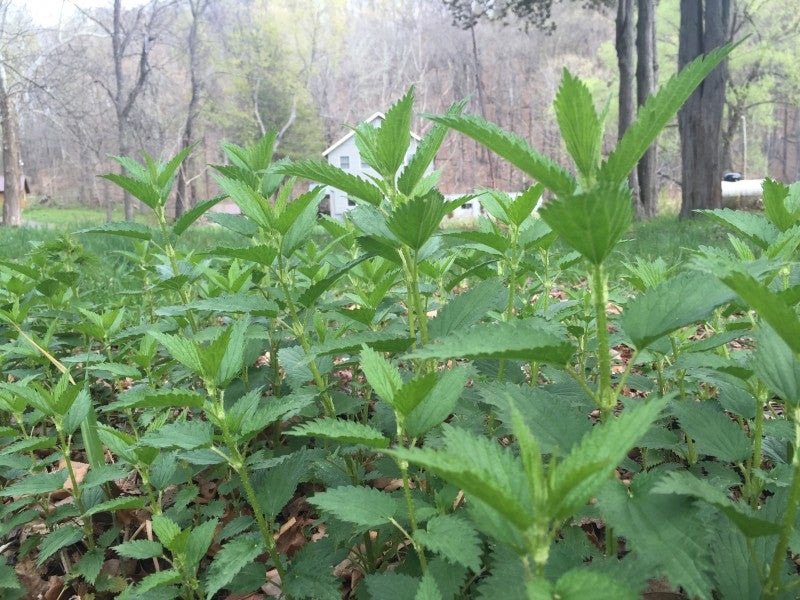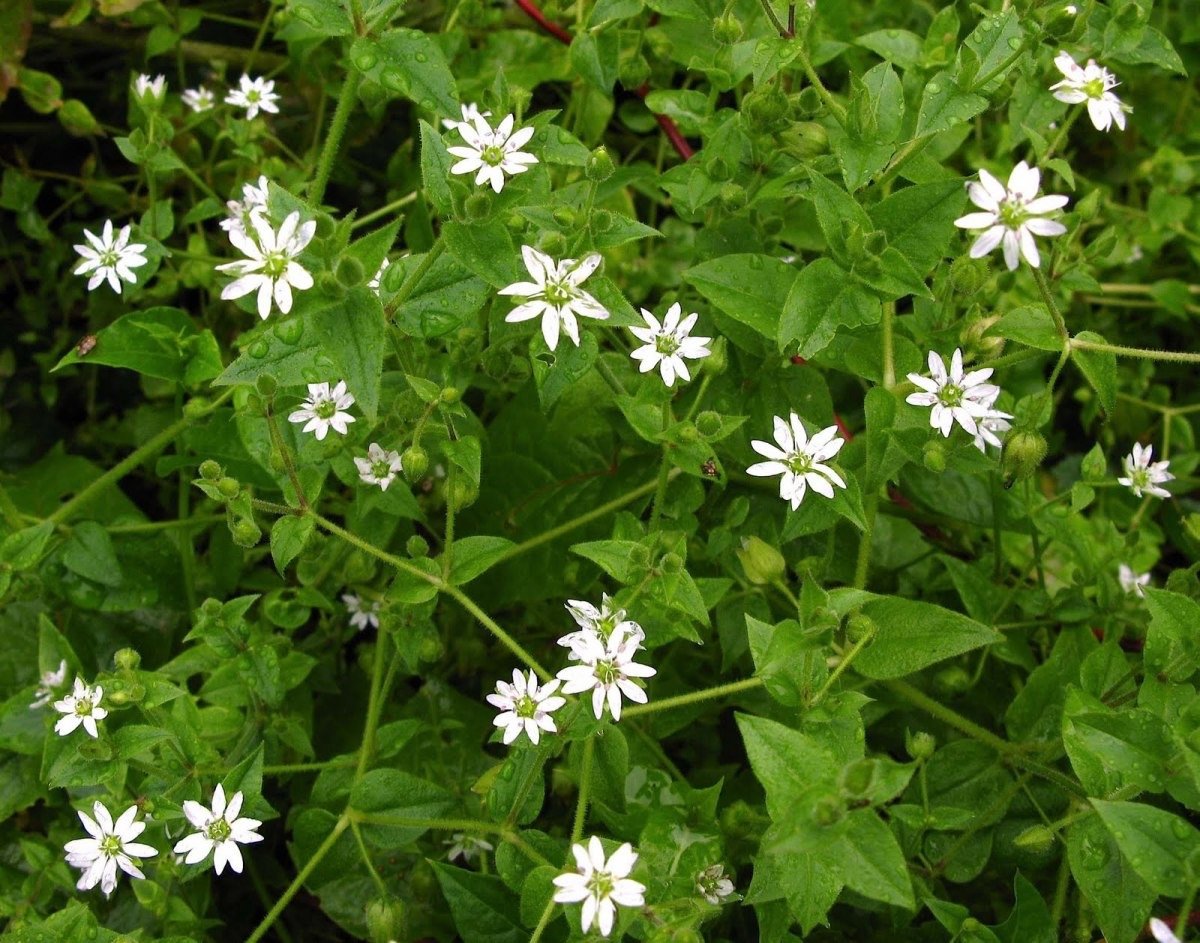The Hidden Power of Weeds: Rediscovering Nature's Pharmacy
Some see the manicured lawns and pristine gardens of suburbia, I see foolishness. Beneath the blades of grass, often regarded as nothing more than unsightly intruders, lie powerful medicinal herbs. Dandelions, chickweed, nettle, and plantain are some examples of these misunderstood and underappreciated plants. They have been dubbed "weeds'' and are targeted with toxic weed killers in a relentless pursuit of a perfect, green carpet. The term “weed” is a description of how a plant grows, identifying its prolific and invasive nature. The term is commonly mistaken as one to identify worthless plants.
Did you know green, weed-free lawns just became common in America in the late 18th century? Prior to that, lawns were a luxury for the wealthy. To essentially tie up land that could be used for agriculture and render it useless was a symbol of wealth and status. Laborers were hired or forced to manicure the lawn with scythes. The development of the lawn mower in 1830 and its mass production in the 1890s made it possible for more people to have lawns.
Now we have individuals spraying cancer causing chemicals on plants that kill cancer.
When they become ill, they walk over these lawns, jump into cars and head to the drugstore to buy chemical remedies.
It’s time we reassess our relationship with these plants and recognize their true value as nature's pharmacy.
Dandelion: The Pharmacist in Your Yard
Dandelion (Taraxacum officinale) is perhaps the most famous of these so-called weeds. Its bright yellow flowers are a familiar sight, but its medicinal properties are less well known. Dandelions are a rich source of vitamins A, C, K, and B2, as well as minerals like iron, calcium, magnesium, and potassium. Dandelion leaves and root extracts have been shown to possibly decrease growth of cancer cells.
Traditionally, dandelion has been used to support liver health and promote digestion. It has been called “piss-the-bed” due to its diuretic properties that flush out toxins. The leaves can be added to salads or brewed into tea, while the roots hold the highest concentration of medicine. Roots are known to be dried and used to make a coffee substitute.
Stinging Nettle: A Nutrient Powerhouse
Nettle (Urtica dioica) is another plant often dismissed as a pesky weed due to its stinging leaves. However, when prepared correctly, nettle is a nutritional powerhouse. Packed with fiber, minerals like iron, calcium, magnesium, and potassium. It also contains vitamins A, C, K, and several B vitamins. Nettles are rich in antioxidant compounds like polyphenols and carotenoids.
Nettle has been used for centuries to treat conditions like arthritis, hay fever, and anemia. The root extracts may be beneficial in treating difficulties associated with benign prostatic hyperplasia. Leaves can be used to treat arthritis, rheumatism, and allergic rhinitis. Stinging nettle can help prevent cardiovascular disease. It also has antiproliferative, anti-inflammatory, antioxidant, analgesic, anti-infectious, hypotensive, and anti ulcer properties. These medicinal characteristics exist in all parts of the plant including leaves, stems, roots, and seeds. The leaves can be cooked into soups, stews, or teas, transforming this prickly plant into a versatile ingredient for promoting health and well-being.
Photo courtesy of http://natures-restaurant-online.com/Plantain.html
Plantain: The Soothing Healer
Plantain (Plantago major) is often overlooked, yet it possesses impressive healing properties. This low-growing plant has been used traditionally to treat wounds, insect bites, and skin irritations. Plantain leaves contain allantoin, a compound known for its skin-soothing properties, and are rich in vitamins A, C, and K. In addition to its external applications, plantain can be consumed to support respiratory and digestive health. Some of its traditional characteristics including wound healing, antipyretic, antitussive, anti-infective, anti-hemorrhagic, anti-inflammatory, diuretic, laxative, astringent and hemostatic have been confirmed in recent studies. The leaves can be chewed fresh, pulverized into a poultice or brewed into tea, making it a valuable addition to any holistic medicine pantry.
Photo courtesy of https://pathsiwalk.com/2018/03/04/chickweed-stellaria-media/
Chickweed: The Cooling Comforter
Chickweed (Stellaria media) is another common weed with significant medicinal value. Known for its cooling and anti-inflammatory properties, chickweed has been used to treat skin conditions like eczema, psoriasis, and minor burns. Chickweed also has expectorant effects that may help loosen mucus and support respiratory health. In the tropical regions of Africa and Asia, leaf decoctions are used to treat acute gastrointestinal and respiratory diseases. Dry leaves can be ground to make pills, powders, or decoctions to heal dermal infections, leg swelling, heart infections, thyrotoxicosis and hemorrhoids. In India, deep wounds are dressed in leaf decoction to stop bleeding and reduce tumors. Crushed leaves, stems and roots can be used to create a poultice for dislocated bones and swelling. The whole can be utilized to combat asthma, bronchitis, pulmonary diseases and obesity. Chickweed is also rich in vitamins A, C, and D, as well as minerals such as iron, calcium, magnesium, and potassium. Not only can it be made into poultices and creams for its anti-inflammatory, soothing effects, It can be added to salads as a super green.
The Environmental and Health Costs of Weedkillers
The widespread use of toxic weed killers to maintain lawns not only destroys these valuable plants but also poses significant risks to human health and the environment. Many herbicides contain chemicals linked to cancer, hormone disruption, and other serious health issues. These toxins can leach into the soil, contaminate water supplies, and harm wildlife.
Moreover, the pursuit of a perfect lawn often involves significant water use, contributing to water scarcity in many areas. The monoculture of grass lawns also reduces biodiversity, making ecosystems more vulnerable to pests and diseases.
Embracing Nature's Pharmacy
Instead of waging war on weeds, we should embrace the bounty that nature provides. Harvesting and preserving these medicinal plants can reconnect us with the natural world and provide powerful remedies for a variety of ailments. Here are some ways to start:
Educate Yourself: Learn to identify medicinal plants in your area. There are many resources available, including books, websites, and local foraging groups.
Harvest Responsibly: When collecting plants, ensure you do so sustainably. Avoid areas that have been treated with chemicals, and only take what you need.
Preserve and Use: Dry herbs for teas, create tinctures, and incorporate fresh plants into your diet. There are numerous recipes and methods for using medicinal plants effectively.
It's unfortunate that such beneficial plants are often eradicated in favor of lifeless, chemically-treated lawns. The plants we often dismiss as weeds hold incredible medicinal potential. By spraying toxic weed killers, we are not only destroying these valuable resources but also harming our health and the environment. It's time to rethink our approach to lawn care and embrace the natural pharmacy at our feet. Let’s stop trying to imitate 18th century royalty and start appreciating the powerful herbs growing in our backyards.
REFERENCES
Fletcher, J. (2023, October 9). 11 health benefits of dandelion. https://www.medicalnewstoday.com/articles/324083
Sigstedt SC, Hooten CJ, Callewaert MC, Jenkins AR, Romero AE, Pullin MJ, Kornienko A, Lowrey TK, Slambrouck SV, Steelant WF. Evaluation of aqueous extracts of Taraxacum officinale on growth and invasion of breast and prostate cancer cells. Int J Oncol. 2008 May;32(5):1085-90. PMID: 18425335.
Bhusal KK, Magar SK, Thapa R, Lamsal A, Bhandari S, Maharjan R, Shrestha S, Shrestha J. Nutritional and pharmacological importance of stinging nettle (Urtica dioica L.): A review. Heliyon. 2022 Jun 22;8(6):e09717. doi: 10.1016/j.heliyon.2022.e09717. PMID: 35800714; PMCID: PMC9253158.
Najafian Y, Hamedi SS, Farshchi MK, Feyzabadi Z. Plantago major in Traditional Persian Medicine and modern phytotherapy: a narrative review. Electron Physician. 2018 Feb 25;10(2):6390-6399. doi: 10.19082/6390. PMID: 29629064; PMCID: PMC5878035.
Oladeji OS, Oyebamiji AK. Stellaria media (L.) Vill.- A plant with immense therapeutic potentials: phytochemistry and pharmacology. Heliyon. 2020 Jun 7;6(6):e04150. doi: 10.1016/j.heliyon.2020.e04150. PMID: 32548330; PMCID: PMC7284062.
Oskii Chevanier, Jamaican Herbalist
Oskii Chevanier is a consultant and educator who works with his clients to offer holistic options for health and wellness. He is the creator of 11 HyHolistic LLC. This entity combines many generations of Jamaican agriculture and holistic medicine with over twenty five years of cannabis experience.






